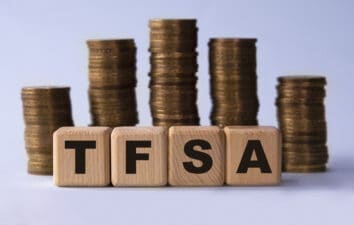Unconventional, or shale, natural gas production has driven the market to a position of oversupply in recent years. US shale gas production increased sixfold to 265 billion cubic meters last year from 75 billion in 2007. Five years after hitting a low of roughly $2.00 per mcf in 2008, natural gas prices are still weak, trading at approximately $3.50.
Some experts say that there are signs that this production boom will slow down and that natural gas prices are preparing to rise. Let’s explore two items that help back this case. Both relate to the supply side of the market.
1) The decline rate (rate at which a well’s production declines) on unconventional wells is very steep.
2) Shale reserve estimates are being reduced.
Background
In 2010 shale gas accounted for 10% of US natural gas production. By 2035 the US government’s Energy Information Administration predicts that shale gas will account for 45% of US natural gas production.
So let’s take a closer look at the characteristics of shale gas in order to understand the implications of this significant shift. Unconventional gas, unlike conventional gas, does not flow freely to the surface. It needs to be forced out through various methods such as injecting chemicals and fracking, and the well needs to be re-stimulated periodically in order for it to keep flowing. So it is more expensive to produce gas from unconventional wells.
Arthur Berman, a veteran petroleum geologist specialized in well assessment asserts that the facts indicate that most unconventional wells require much higher natural gas prices to break even on a long term basis.
1) High Decline Rates on Unconventional Wells
Unconventional wells have very high initial production but the rate of production falls dramatically not long after the well is tapped. The wells experience these high production declines due to the low permeability characteristics of a shale deposit and the low concentration of gas spread over large areas.
Marcellus Shale wells, for example, experience a decline rate of approximately 65-85% within the first 12 months with subsequent declines over the remainder of the life of the wells. This compares very unfavourably to the declines seen in conventional wells, which are in the 4% to 7% range per year. Further illustrating the point, the overall life span of shale wells in Texas is about 8 years, whereas conventional wells demonstrate more stable output for 20 to 30 years.
So maintaining production growth and offsetting these steep declines is a tall order. Companies must continuously invest heavily in drilling, and experts say that this cannot be maintained at current natural gas prices.
For example, Birchcliffe Energy (TSX: BIR) operates in the Montney shale gas play and its production is comprised of 76% natural gas. The company has seen good production growth of almost 17% in the first six months of this year, but its balance sheet has paid the price. The company’s Debt to Cash Flow ratio for the first six months of this year stands at a very high 3 times. It’s costing Birchcliffe a lot of money to grow production – and this money is coming from debt, not cash flow. Higher gas prices would help rectify this equation.
2) Shale Reserves Write Downs
In recent months, we have seen more than one negative revision of U.S. shale reserves. This potentially implies that the initial estimates of shale gas recoverability may have been too high. Royal Dutch Shell (NYSE: RDS) recently announced a write down of just over $2 billion related to its North American shale assets. BHP Billiton (NYSE: BHP) has also had to write down its US shale assets. Part of this is due to low natural gas prices, but it’s also because exploration and drilling results are coming in weaker than anticipated.
Natural Gas Equities to Benefit
If supply isn’t what it seemed and production is set to decline causing the price of natural gas to rise, which companies are set to benefit the most?
Well, of course there is Encana (TSX: ECA), with $2.9 billion in cash and cash equivalents, and decades of drilling inventory.
There are also companies like Tourmaline Oil Corp (TSX: TOU), with a market cap of $7.2 billion and Peyto (TSX: PEY), with a market cap of $4.4 billion.
Tourmaline’s production is comprised of 89% natural gas and in the first quarter of 2013, the company achieved a 47% growth in production. And at the end of the quarter, its net debt to cash flow ratio was a healthy 0.5 times.
Peyto’s production is comprised of 89% natural gas and it achieved production growth of 38% in the first half of 2013. The stock is not cheap on a price to cash flow basis, but the company does have an excellent track record of delivering results and it is the lowest cost natural gas producer.
Bottom Line
While long term production characteristics are somewhat unclear because of the fact that the shale gas industry is still in its relative infancy and data remains limited, slowly, a better understanding is slowly evolving. The data that is being compiled is beginning to indicate some concern over the long term sustainability of shale gas production at these price levels is warranted. Coupled with the continuing decline in conventional production, and the potential for big demand coming from the new LNG market, the natural gas market could be on the verge on experiencing a shift in fundamentals: lower supply, higher demand, which of course would drive natural gas prices higher.
Another way to play
Though oil and gas tend to grab most of the attention when it comes to energy, there is another way to play this space. Uranium – the key ingredient in nuclear power – has the potential to be the energy source of the next 100 years.
That is why the Motley Fool has prepared a Special FREE Report that will clue you into two of the best uranium companies in Canada. It’s called “Fuel Your Portfolio With This Energetic Commodity,” and you can receive a copy at no charge by simply clicking here now!
The Motley Fool’s purpose is to help the world invest, better. Click here now for your free subscription to Take Stock, The Motley Fool Canada’s free investing newsletter. Packed with stock ideas and investing advice, it is essential reading for anyone looking to build and grow their wealth in the years ahead.
Follow us on Twitter and Facebook for the latest in Foolish investing.
Fool contributor Karen Thomas owns shares in EnCana. The Motley Fool does not own shares in any of the companies mentioned at this time.








